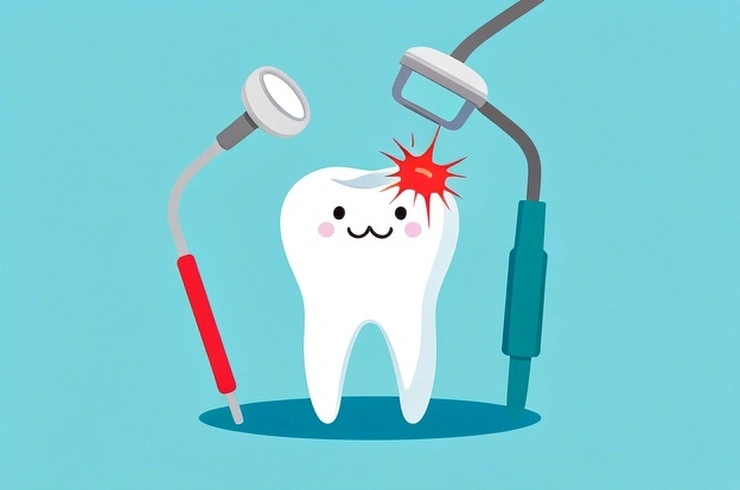
A root canal is a crucial dental procedure aimed at preserving a tooth that has been compromised by deep decay, repeated dental procedures, large fillings, cracks, chips, or facial trauma. When the tooth's nerve and pulp become irritated, inflamed, or infected, a root canal is necessary to remove the damaged tissue, clean the inner chamber, and seal it. This process prevents the spread of infection, which could otherwise lead to an abscess—a pus-filled pocket forming at the root tip—and potential swelling, bone loss, or drainage issues.
While root canals often carry a reputation for pain, the procedure itself is comparable to getting a routine filling. The tooth's nerve, after eruption, primarily serves a sensory function (detecting hot or cold) and isn't vital for the tooth's long-term health or function. Therefore, its removal during a root canal won't impair how your tooth works.
Several signs may indicate the need for a root canal, including lingering tooth sensitivity (especially to hot or cold), sharp pain during chewing or biting, pimples on the gums, chipped or cracked teeth, swollen or painful gums, deep decay, or darkened gums. If you experience any of these symptoms, it's crucial to consult a dentist.
Root canal procedures are typically performed by a general dentist or an endodontist, a specialist in dental pulp diseases and injuries. The process begins with an X-ray or cone beam scan to assess the root canal's shape and check for infection. Local anesthesia is administered to numb the area, and a rubber dam is placed to keep the tooth dry. An access hole is then drilled, allowing for the removal of the pulp, bacteria, and decayed nerve tissue. The root canals are meticulously cleaned using specialized files and flushed with water or sodium hypochlorite.
After thorough cleaning, the tooth is sealed. Sometimes, a temporary filling is placed if further medication is needed to clear an infection before permanent sealing. The final step involves filling the interior with a sealer paste and gutta-percha. A permanent filling closes the access hole. Often, a crown, crown and post, or other restoration is required to protect the weakened tooth and restore its full function, as teeth needing root canals frequently have extensive decay or large fillings.
Recovery from a root canal is generally swift. Most individuals can return to their normal activities shortly after the procedure. Some sensitivity may be experienced for a few days due to tissue inflammation, which can be managed with over-the-counter pain relievers. It's advisable to avoid chewing on the treated tooth until a permanent filling or crown is in place to prevent damage. Maintaining good oral hygiene through regular brushing, flossing, and dental check-ups is essential for long-term success.
Root canal treatment boasts a high success rate, exceeding 95%, with many treated teeth lasting a lifetime. However, complications can arise, such as new infections due to undetected root canals, cracks, issues with the restoration, or breakdown of the internal sealing material. In such cases, retreatment or an apicoectomy (root-end resection) may be necessary to save the tooth.
The cost of a root canal varies based on the severity and the affected tooth, with many dental insurance policies offering partial coverage. While general dentists' fees for an incisor might range from $500 to $1,000, and molars from $800 to $1,500, endodontist fees could be up to 50% higher.
Saving your natural teeth through a root canal is generally the preferred option, as it allows for a diverse diet and maintains proper nutrition. Alternatives, such as tooth extraction followed by a bridge, implant, or removable partial denture, are typically more expensive and require more extensive treatment time.
Preventing the need for a root canal involves practicing good oral hygiene: brushing at least twice daily, flossing daily, wearing a mouthguard during sports, and maintaining regular dental check-ups. These simple steps can significantly reduce the risk of deep decay and infection, helping you avoid the need for a root canal in the first place.
Pro Tip
The content of the article is shared by netizens, please carefully identify it